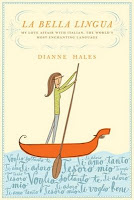
Italian’s basic word chest, as tallied in a recent dictionary totals a measly 200,000, compared to English’s 600,000 (not counting technical terms). But with a prefix here and a suffix there, Italian words multiple like fruit flies. Fischiare (whistle) sounds merry enough, but fischiettare means “whistling with joy.” No one wants to be vecchio (old), but invecchiare (to become old) loses its sting – and according to an old Italian, no one does so al tavolo (at table). Sooner or later we may all may end up in a garbuglio, or muddle, but stumbling through the syllables of garbugliarsi is sure “to get (you) muddled.” A sign outside a rustic osteria (a tavern serving simple food) summarized its entire menu on a single word: pranzo (lunch) – fifteen euro; pranzetto (lighter lunch)- ten euro; pranzettino (bite to eat) – five euro.
****
What Italian doesn’t say also is revealing. Italian has no words that precisely translate lonely (unthinkable for its gregarious speakers), privacy (equally unthinkable in an Italian family), spelling (since words generally look as they sound – to Italians that is), or dating (although it begins before puberty). Yet some of the most tantalizing Italian words such as garbo, a pitch-perfect combination of style and grace, and agio, a sense of comfort and ease, don’t translate into English.
Follow Dream of Italy on Twitter where this week we will give away five copies of La Bella Lingua!
